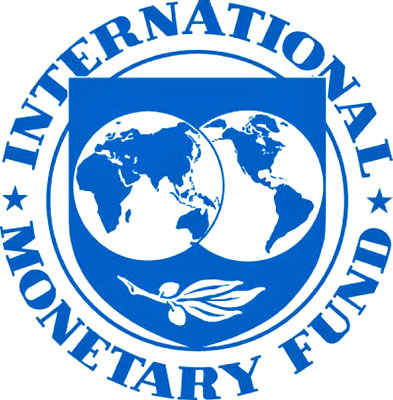|
The new IMF Director, Christine Lagarde, came to Washington this week begging for yet more billions so the fund can continue propping up insolvent European banks and wrapping developing countries around the globe in debt chains.
Lagarde is on a political junket with the aim of
raising an additional $500 billion for the IMF, money that will be used for
future Eurozone bailouts and other financial crises, or so they say. The
speech was delivered 64 years to the day after Truman's signing of the
Marshall Plan (coincidence, surely) as she asked the American taxpayers to
search their hearts, take one for the team and dig deep to help foot the
bill for Europe.
It's 2012 and the Eurozone is falling apart at the seams because it was a failed concept from the beginning. The cracks in the Euro have been showing for years, despite the best efforts of the Goldman Sachs gang to paper over the debt swap deal that helped Greece lie its way into the Eurozone and helped Goldman earn 12 percent of its entire trading and investment revenue in 2001 on a single day.
Lagarde didn't mention this in her speech, but she did assure the crowd that at the IMF,
The only thing that is remarkable about this is that the public is expected to believe it.
No one who has any understanding of the IMF's past or how it operates would expect that these funds to be used in any other way than they always have been:
In the 1990s the IMF put “stipulations” on their loan package for Brazil that required amendments to the country's constitution, and then lobbied extensively for those changes.
Between the start of IMF involvement in Peru in
1978 and the second round of loans in the 1990s, the appropriately acronymic
SAP (structural adjustment program) managed to quadruple illegal coca
production by devastating local farmers and leaving them to choose between
growing coca or starving. They chose coca.
Billions of dollars in IMF loans to Russia in
the 1990s were diverted straight into the Swiss bank accounts of oligarchs
and gangsters. One $4.8 billion dollar loan program administered by the fund
in 1998 went in one door of the Russian central bank and straight out the
other. The people never saw a ruble of it and were left with unemployment
rates, stock market losses and currency devaluation that rivaled the Great
Depression.
The people figure out that they've been footed with the bill for someone else's party and the riots begin. We've been witnessing this in Europe since the Euro crisis began and it's flaring up again. This week a 77 year old Greek pensioner shot himself in the head outside parliament because, he said, he didn't want to have to start picking through trash in order to feed himself.
The IMF issued a statement Thursday that it was
“deeply saddened” by the incident, but the people of Athens have taken to
the streets yet again, with thousands flocking to the site of his death and
many scuffling with police.
People take to the streets to protest the austerity measures that are tied to the IMF loans, causing foreign capital to flee, governments to go bankrupt, and foreign speculators to pick up the pieces at fire sale prices. The riots happened in Indonesia in 1998. And Bolivia in 2000. And Ecuador and Argentina in 2001.
What's happening in Europe is not an exact
analogue, and it's aimed at centralizing power in the EU in Brussels and the
ECB in Frankfurt, but that the IMF has seen the crisis as an excuse to get
its foot in Europe's door as a lender is particularly telling.
This is why Lagarde is likely to get her $500 billion, or something approximating it, including an extra $63 billion that the US is slated to start paying under a new quota agreement.
And the band plays on...
|

